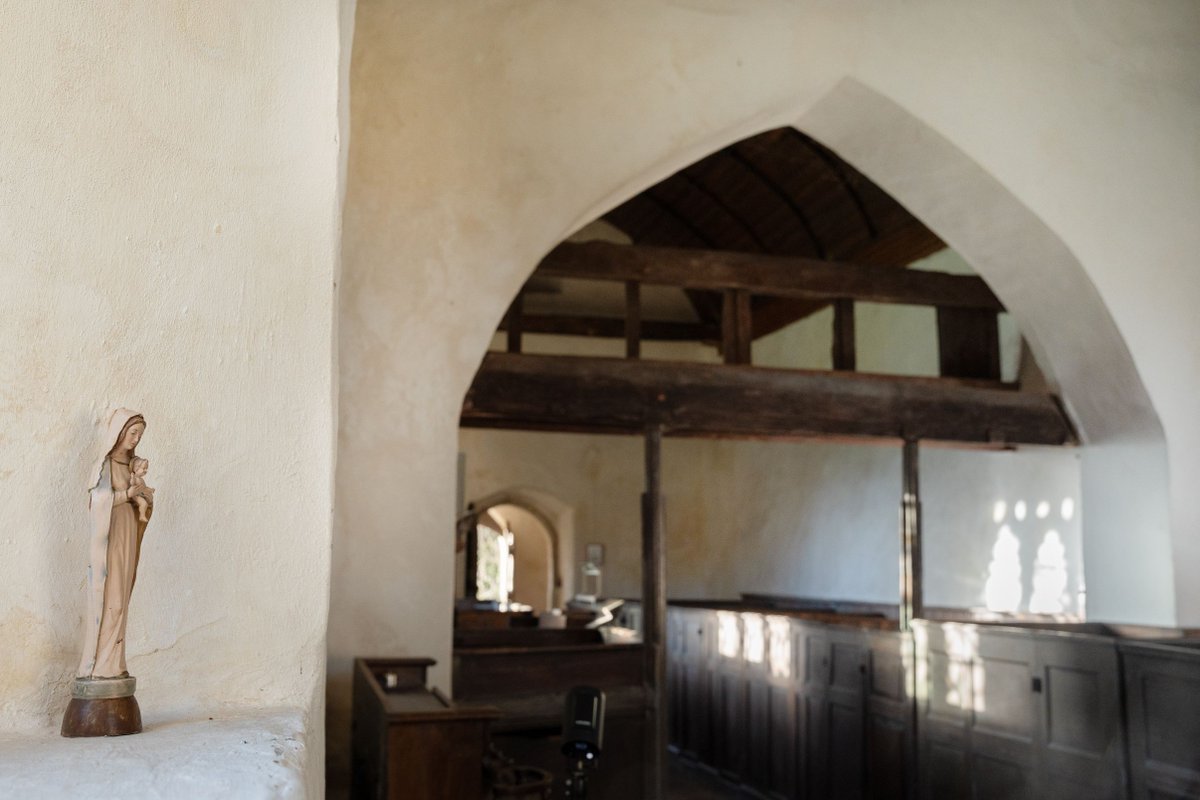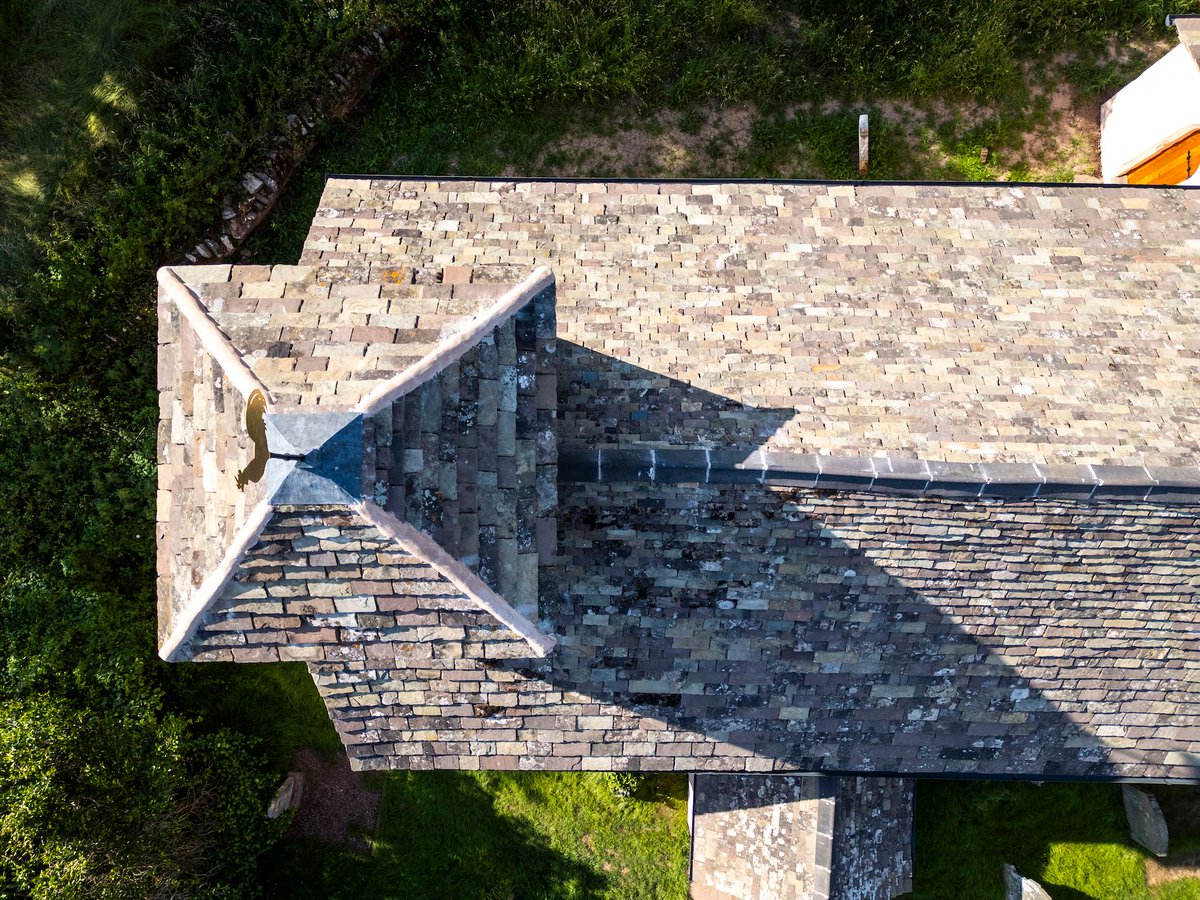In the Vale of Aylesbury, there are low-lying limestone hills surrounded by clays and sands. There, at Waddesdon Hill in 1792, ragged limestone was used to build the Strict & Particular chapel. And under the pebble-dash render, we found an ammonite as big as your head!
#thread
#thread

The chapel had a thick layer of lumpy cement render on three sides, the last side had a light slurry of lime mortar. The render was causing problems of damp and decay, so we removed it to replace with a more permeable lime layer.
2/6
2/6

During the removal, we’ve been fascinated by all the fossils – some small, some enormous – that we’ve uncovered. The gigantic ammonite spiral is a real thrill, but there are several brachiopods (clam-shell shape) and chunky crinoid stems too.
3/6
3/6

I’m no geologist, so correct me if I’m wrong, but I think this area is part of the Upper Jurassic Corallian Group, which was formed about 160 million years ago, when the area was covered by a shallow, tropical sea and marine life flourished.
4/6
4/6
Stone from the area has been used in building since the Middle Ages, and the geological significance of the area - of the stone and creatures immortalised with in it – has been studied since the 1800s.
5/6
5/6

Unfortunately, the fossils in the chapel walls will be covered over – and protected – by the new lime render, but we have made a photographic record of what’s been found.
6/6
6/6

• • •
Missing some Tweet in this thread? You can try to
force a refresh






















